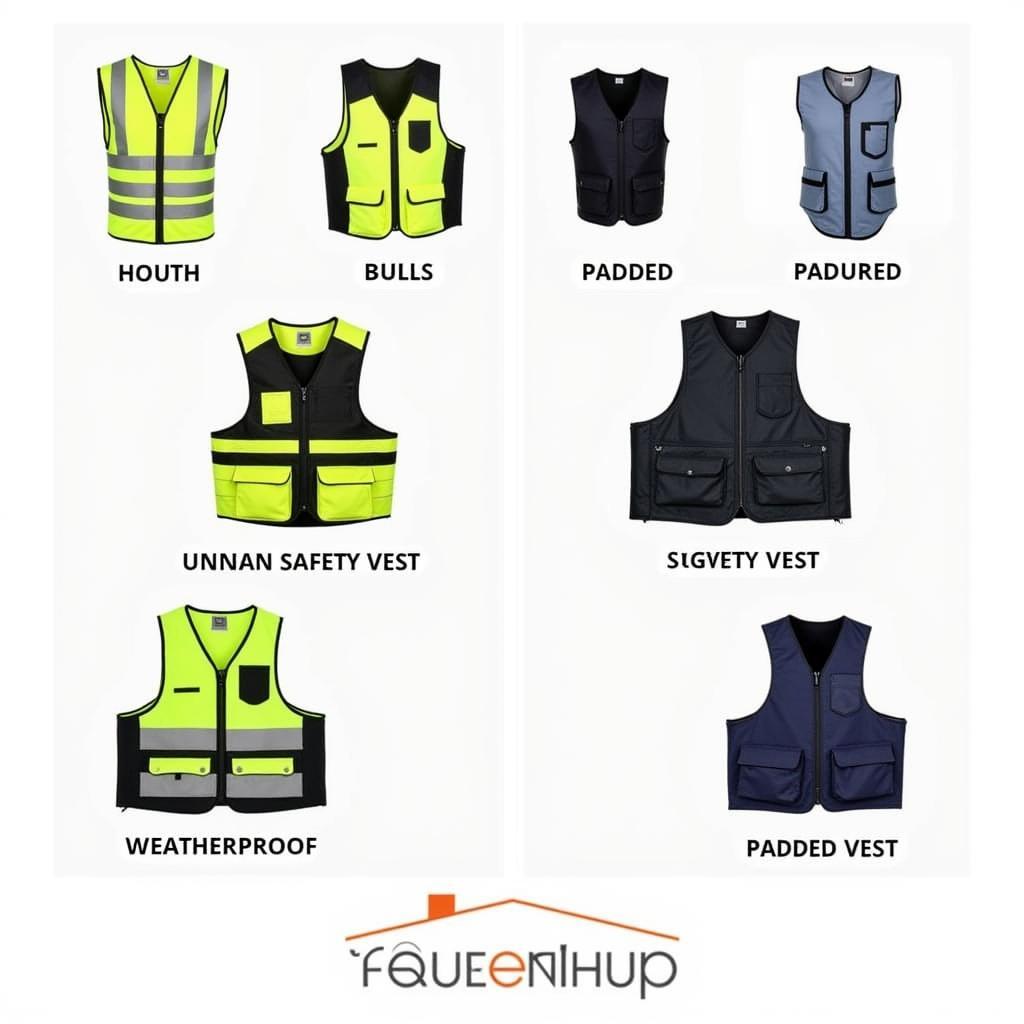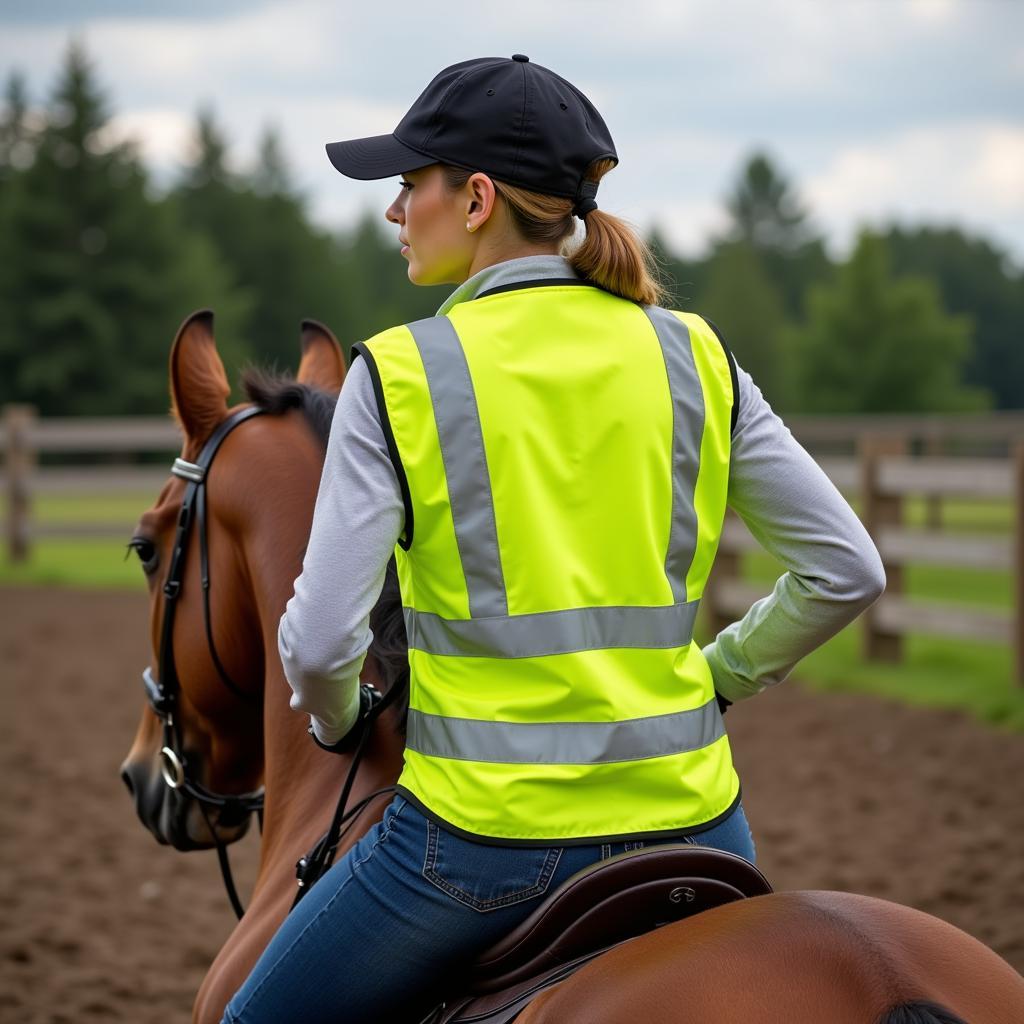When it comes to horse riding, having the right gear can make all the difference in your comfort, safety, and performance. While most riders focus on essential equipment like saddles and bridles, a good vest is often overlooked. Whether you’re a seasoned equestrian or a beginner, this guide will cover everything you need to know about vests for horse riding, helping you choose the best one for your needs.
 Types of Horse Riding Vests
Types of Horse Riding Vests
Why Wear a Vest for Horse Riding?
Vests offer a range of benefits for riders, making them a valuable addition to your riding attire.
Protection and Safety:
One of the primary reasons to wear a vest is safety. In case of a fall, a well-designed safety vest can provide crucial protection to your torso, back, and ribs. This is particularly important for beginners who are still developing their balance and coordination, as well as for experienced riders engaging in activities with a higher risk of falling, such as jumping or cross-country riding.
Comfort and Warmth:
Beyond safety, vests offer practical advantages. During colder months, insulated vests provide an extra layer of warmth without restricting movement. They are also great for layering under a long horse riding coat for added insulation on particularly chilly days.
Style and Professionalism:
Let’s not forget about style! Vests come in various designs and materials, allowing you to express your personal style while maintaining a professional look. Whether you prefer a classic quilted vest or a sporty softshell design, there’s a vest out there to complement your riding wardrobe.
 Safety Vest for Horseback Riding
Safety Vest for Horseback Riding
Types of Horse Riding Vests
With a wide array of vests available, understanding the different types and their specific purposes is essential:
1. Safety Vests:
As the name suggests, safety vests prioritize rider protection. These vests often feature:
- Impact-absorbing padding: This padding, commonly made from foam or air-filled pockets, absorbs shock upon impact, reducing the severity of injuries during a fall.
- High Visibility: Many safety vests come in bright colors like neon yellow or orange and have reflective strips to enhance visibility, especially in low light conditions.
- Secure Fit: Safety vests usually have adjustable straps and closures to ensure a snug and secure fit, preventing the vest from shifting or riding up during a fall.
2. Padded Vests:
While not as robust as dedicated safety vests, padded vests provide a level of cushioning and impact protection. They are a good option for riders who:
- Want extra padding: Riders who experience back pain or want additional support may find padded vests more comfortable, especially during longer rides.
- Engage in less risky disciplines: For disciplines like dressage or trail riding, where the risk of falling is lower, padded vests offer sufficient protection.
3. Weatherproof Vests:
Designed to shield riders from the elements, weatherproof vests are essential for riding in various weather conditions:
- Water-resistant or Waterproof: These vests keep you dry during light rain or heavy downpours, depending on the level of waterproofing.
- Windproof: Windproof vests protect you from chilly winds, ensuring a more comfortable riding experience, especially during the transitional seasons.
- Breathable: Look for vests made with breathable fabrics to prevent overheating and moisture buildup.
Choosing the Right Vest: Factors to Consider
Selecting the ideal vest depends on your individual needs and riding style. Here are key factors to consider:
1. Riding Discipline:
- English Riding: Traditional English riding attire often calls for more fitted vests, often in neutral colors like black, navy, or brown.
- Western Riding: Western riders have more flexibility in style and color, with vests often featuring fringe, embroidery, or other decorative elements.
- Safety-Critical Disciplines: If you participate in disciplines like eventing, show jumping, or cross-country, a certified safety vest is non-negotiable.
2. Level of Protection:
- Beginners: New riders should prioritize safety with a certified safety vest offering maximum impact protection.
- Experienced Riders: The level of protection needed depends on the riding discipline and personal preference. For instance, a dressage rider might choose a padded vest for added back support, while a show jumper would opt for a high-visibility safety vest.
3. Fit and Comfort:
- Proper Fit: The vest should fit snugly without restricting movement. It shouldn’t be too loose, as this can compromise its protective capabilities.
- Breathability: Choose breathable fabrics to stay comfortable and avoid overheating, especially during warmer weather.
Caring for Your Horse Riding Vest
Proper care ensures your vest lasts for years and maintains its protective qualities:
- Follow care instructions: Always refer to the manufacturer’s care label for specific washing and drying instructions.
- Air dry: Most vests should be air-dried to prevent damage to the padding or fabric.
- Inspect regularly: Check your vest for any signs of wear and tear, such as loose stitching, tears, or damaged padding. Replace it if necessary.
Investing in Safety and Comfort
A good horse riding vest is an investment in your safety and comfort. By understanding the different types available and considering factors like riding discipline and desired level of protection, you can choose the perfect vest to enhance your riding experience. Remember, safety should always be a priority, and investing in a high-quality vest is a smart choice for riders of all levels.
FAQs About Vests for Horse Riding:
1. Are safety vests required for horse riding?
While not always mandatory, many riding schools and competitions require certified safety vests, especially for disciplines with a higher risk of falling.
2. Can I wear a regular Vest For Horse Riding?
Regular vests without impact-absorbing padding do not offer adequate protection for horse riding. It’s crucial to choose a vest specifically designed for equestrian activities.
3. How should a horse riding vest fit?
A horse riding vest should fit snugly without restricting movement. It should sit close to the body but allow for a full range of motion.
4. Can I wear a backpack over my riding vest?
It’s generally not recommended to wear a backpack over a safety vest, as it can interfere with the vest’s fit and impact absorption.
5. How often should I replace my horse riding vest?
Inspect your vest regularly for signs of wear and tear. It’s generally recommended to replace safety vests every 3-5 years or after a fall, even if there’s no visible damage.
For more information on horse riding equipment, check out our articles on leather bridles for horses and horse saddle position.
Need assistance? Contact our team at Phone Number: 0772127271, Email: [email protected], or visit us at QGM2+WX2, Vị Trung, Vị Thuỷ, Hậu Giang, Việt Nam. We offer 24/7 customer support.